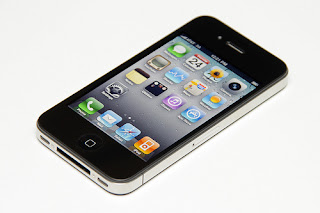May 22, 2012
How to fix battery issues after upgrading to iOS 5.1.1
Do you like this story?
After Apple's iOS 5.1.1 update was released last two week, several users began reporting that their iOS devices had taken a significant battery life hit.
While the issues are not common to most users, it appears as though some iPhone and iPad owners found that the battery life they had come to expect was not apparent after updating to iOS 5.1.1 using Apple's over-the-air updating.
If you find your device is not getting the battery life it once was, a few troubleshooting tips provided by Apple Support Communities user sbaily4 could be of help.
First, be sure you have a good backup of your iPhone or iPad. Plug your device into your Mac or PC, open iTunes, and sync it.
Open Settings and tap to navigate to General > Reset. Tap "Reset All Settings" at the top of the screen. This option does not delete your content (music, videos, photos, or apps) so you won't lose anything important.
Your iPhone or iPad will then prompt you for basic setup information including reconnecting to your Wi-Fi network, as if you had just purchased the device. Now, use your device so that the battery drains completely to zero percent.
Now, plug your device into a power source (preferably a wall outlet) and let it charge, undisturbed, to a full 100 percent. If your battery percentage is not showing up, open Settings and navigate to General >Usage. Under battery usage, flip the switch to On.
This process should resolve any battery issues resulting from the iOS 5.1.1 update, especially if it was performed over the air. If you find that your battery life is still not up to par, plug your device into your Mac or PC, open iTunes, and perform a restore -- first from a backup and then, if that does not resolve the issue, as a new device.
Have you experienced any issues, battery life or otherwise, after upgrading to iOS 5.1.1? Let me know in the comments!
While the issues are not common to most users, it appears as though some iPhone and iPad owners found that the battery life they had come to expect was not apparent after updating to iOS 5.1.1 using Apple's over-the-air updating.
If you find your device is not getting the battery life it once was, a few troubleshooting tips provided by Apple Support Communities user sbaily4 could be of help.
First, be sure you have a good backup of your iPhone or iPad. Plug your device into your Mac or PC, open iTunes, and sync it.
Open Settings and tap to navigate to General > Reset. Tap "Reset All Settings" at the top of the screen. This option does not delete your content (music, videos, photos, or apps) so you won't lose anything important.
Your iPhone or iPad will then prompt you for basic setup information including reconnecting to your Wi-Fi network, as if you had just purchased the device. Now, use your device so that the battery drains completely to zero percent.
Now, plug your device into a power source (preferably a wall outlet) and let it charge, undisturbed, to a full 100 percent. If your battery percentage is not showing up, open Settings and navigate to General >Usage. Under battery usage, flip the switch to On.
This process should resolve any battery issues resulting from the iOS 5.1.1 update, especially if it was performed over the air. If you find that your battery life is still not up to par, plug your device into your Mac or PC, open iTunes, and perform a restore -- first from a backup and then, if that does not resolve the issue, as a new device.
Have you experienced any issues, battery life or otherwise, after upgrading to iOS 5.1.1? Let me know in the comments!
 About the Author:
Ifeanyi Emeka is the founder of this blog and also writes for Tech Forked. He is passionate about tech stuffs and loves customizing blogger themes.
About the Author:
Ifeanyi Emeka is the founder of this blog and also writes for Tech Forked. He is passionate about tech stuffs and loves customizing blogger themes.Popular This Week
How to fix battery issues after upgrading to iOS 5.1.1
2012-05-22T19:04:00+01:00
dfgdfg
Apple|Battery|IOS|iPhone|iPhone 4S|
Subscribe to:
Post Comments (Atom)


